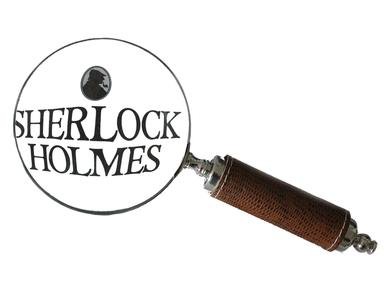
Digital, multimodal, and multimedia presentation of analyses are encouraged.


You will compare the films perspectives, and orientations, using the theoretical tools presented in course readings.
#Sherlock holmes and narrator art of deduction questions how to#
Your analytical goal is not only to prove your conclusions, but to educate your readers into how to think critically.īe sure to anchor your analysis into the language of “The Black Cat.” In other words, be sure to quote directly and fully from the story.Ĭonsider the difference between facts and the interpretation of facts. As such, make sure you provide your readers with enough background and context to understand your argument and the techniques you are using to make them. In writing your paper, keep a number of things in mind:Īssume you know more about the story and about critical reasoning procedures than your readers. That “intellect” is you! Your task is to apply some of the “structured procedures” of critical reasoning we have learned in this course to investigate the narrator’s claims about both the events of the story and the explanations he provides for his behavior and the events he chronicles. Throughout the story, he makes a number of claims that “some intellect more calm, more logical, and far less excitable” than his own would find, at the very least, to be unsound and implausible. But certainly, many of the claims he makes are hard to believe. In the first paragraph of “The Black Cat,” the narrator claims he is not “mad,” and whether he is or not is almost beside the point. This way of thinking is what Maria Konnikova calls System Holmes, and which we are calling critical reasoning.įor this paper, employ these critical reasoning skills-the same skills used by Sherlock Holmes-not to solve a crime (a jury has already concluded what happened), but rather to discuss the flaws in the narrator’s thinking, the way he uses and misuses facts to try to explain away his personal responsibility for his wife’s murder. This thought process reduces his “phantasm to the common place,” explaining the events as “nothing more than an ordinary succession of very natural causes and effects,” a method Sherlock Holmes uses to solve mysteries through the “art of deduction” and the scientific method.

On the other hand, the narrator suggests that there is another way of accounting for these “household events,” which he admits is “more logical” than his own. On the one hand, his account relies on occult explanations and the questionable claims that follows from them.

Within Poe’s story, “The Black Cat,” the unnamed narrator provides us with two opposed ways of thinking about his role in a “series of mere household events” leading up to the brutal murder of his wife. Length: 1,250 words on double spaced lines


 0 kommentar(er)
0 kommentar(er)
